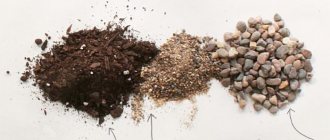Useful properties of rose hips
The fruits are colored due to the high content of carotene, which is a very useful substance.
The berries contain high levels of vitamin C, B1, B and K. The seeds of the fruit contain vitamin E. The roots and petals also have medicinal qualities. Infusion and decoction of rose hips saturates the human body with vitamins such as iron, calcium, manganese, magnesium and phosphorus.
Also organic acids (especially ascorbic acid, which is contained in rose hips tens of times more than in lemon and currants), pectins, and potassium salts.
Rosehip tannins have a very positive effect on the health of the body as a whole. This shrub and its fruits are especially valued for their bactericidal and phytoncidal properties. They are a powerful antioxidant.
Rosehip is recommended to be taken in the form of infusion and syrup for liver diseases, vitamin deficiency, low immunity, colds and much more. Rosehip oil, rich in vitamins, is widely used. They make incredibly tasty jam from the berries, make jam and marmalade, and add them to food.
Growing and caring for rose hips
Growing rose hips in our climate has a beneficial effect on this shrub. If you have a private sector or have a summer cottage, you can plant several bushes of different types of rose hips.
This will ensure good fruiting. Rose hips begin to bear fruit three years after planting. The shrub should be planted in autumn or spring, in a lighted and spacious place.
Be sure to place in well-moistened soil. The soil is plowed in advance to a depth of 20 cm and fertilized, as for fruit trees. Black soil is considered ideal soil, as is gray forest soil.
A hole measuring 50 by 50 by 50 is ideal for an average plant. The roots of the seedlings need to be trimmed a little before lowering them into the hole. This will increase the survival rate of the plant.
After planting, the bush seedling is well watered and cut to 1/3 of its length. The ground around the seedling is mulched. Growing shrubs in swampy areas is unacceptable.
Rose hips are pruned two years after planting. Old and non-fruitful shoots are removed. If the bush is more than 10 years old, then it is pruned at the root, performing anti-aging pruning.
Rose hips begin to bloom in June and then you can carefully pick off the petals. You can then make a healing infusion from them.
Rosehip is a frost-resistant plant. There are varieties: Ruddy, Vitamin, Yubileiny.
The main pests of rose hips include the rosehip fly; it is worth fighting it by spraying with a special preparation BI-58.
When the rose hips ripen and acquire a bright color, they should be collected. This must be done carefully, choosing ripe and whole berries at once, trying not to press down, so as not to violate the integrity of the fruit.
It is important not to let the rosehips become overripe, otherwise it will be very difficult to collect them intact. Therefore, harvesting is carried out when the fruits are still hard.
Then they are placed in the oven and dried. It is recommended to store in fabric bags. Rose hips can be propagated by seeds, shoots and dividing the bush.
Regards, Alexey!
Choosing a landing site
Rosehip is a perennial plant; it can grow in one place for 20-25 years. To plant it, you should choose a well-lit area with fertile soil. The most suitable option would be black soil or loamy soil. The rosehip root system develops strongly and goes deep up to 5 m. Therefore, Wild Rose needs to be planted on a hill where groundwater does not accumulate. After all, due to excess moisture, the roots can rot. It is good to plant bushes in a place where perennial herbs and vegetables previously grew, which were fertilized with organic matter. Wild rose has healing qualities, but like any plant, it absorbs toxins. Therefore, it is recommended to grow it away from the road. And by planting along the fence you can create a hedge.
Rules for planting rosehip seedlings
Chokeberry cultivation and care, pruning and propagation.
The best varieties of chokeberry In the garden, wild roses can be planted in a row or in a clump
It is important to leave a distance of about 1.5–2 m between the bushes. Two-year-old seedlings that have managed to grow a powerful crown and, accordingly, strong rhizomes are most suitable for planting
When to plant rosehip seedlings does not matter much. If you plan to root in the spring, be sure to fertilize the soil in the fall. To do this, in mid-October, when digging up the site, add compost or rotted manure to a depth of 30 cm. About 6–7 kg of organic matter should fall per square meter of land. In the case of autumn planting of seedlings, fertilizing should be organized a month before.
In general, rose hips, according to housewives who have already acquired them, are easy to plant and care for. In order for the seedling to take root well and grow quickly, it is necessary to make a square depression of 30 cm. If the soil has not been fertilized, it is better to dig a hole deeper and wider - about 80 cm wide and 50 cm deep. The bottom is drained, sprinkled with a small layer of substrate on top, the rhizomes are lowered and straightened, and buried with a mixture of compost and the top layer of soil.
Some gardeners recommend adding 100 g of superphosphate and 30 g of potassium salt as fertilizers. Then the bush needs to be watered abundantly. For this purpose, you will need about 8 buckets of settled water. After everything, you can start mulching the tree trunk circles. Peat chips are an excellent material for this; it is enough to lay out a 3 cm layer of it.
Did you know? Archaeologists during excavations in Switzerland discovered evidence that people ate wild rose berries back in the Ice Age.
Diseases and pests
"Wild Rose" is susceptible to diseases and pest attacks. These include rust, powdery mildew, gray and brown rot, and damage is caused by rose flies, leaf rollers, spider mites and sawflies.
Using garlic infusion from laundry soap will help get rid of insects. The shrub should be sprayed with this mixture before flowering and after harvesting the fruits. Topaz will help with rust, and Bordeaux mixture will help with black spotting.
Treat the bushes against pests several times a season.
Rosehip is a high-vitamin plant and perennial. Often used in landscape design as a hedge. Planting and caring for it is not burdensome. Feeding plays a special role. They are held four times a year. Rose hips are used to make tea, decoction, preserves and jam. The shrub contains a large amount of vitamin C and is an excellent remedy for the prevention and treatment of colds.
Properties of rose hips: harm and benefit
Useful properties of rose hips
Japanese quince - benefits and harm. Planting and growing, care and propagation of quince chaenomeles
More types of rose hips have a lot of vitamin C in their fruits. Lemons have 50 times less of this vitamin, black currants have 10 times less, and fir, spruce, juniper and pine needles have 60–70 times less compared to with rose hips. Begger's rose hips are leaders in vitamin C content. These fruits also contain vitamins B1, B2, B6, E, K, PP, carotene, tannins and coloring substances, malic and citric acids, sugars, phytoncides, essential oils, as well as potassium , magnesium, phosphorus, iron, calcium, copper, chromium, cobalt, molybdenum and manganese. The composition of the flowers of this plant includes essential oil, organic acids, glycosides (bitters and saponins), sugars, fatty oils, flavonoids, tannins, wax, ascorbic acid, anthocyanins (peonidin, cyanidin, peonin). The leader in essential oil content are the petals of the rugosa rosehip.
Rosehip oil has an antibacterial, anti-inflammatory and firming effect. It activates regeneration processes in injured tissues and mucous membranes. In this regard, it is widely used for cracks, dermatoses, trophic ulcers and abrasions. In addition to vitamin C, the foliage contains catechins, flavonoids, tannins, phenol carbonic acids and their derivatives. Essential oil was found in the foliage of the blood-red rosehip, and the composition of the leaf blades of the May rosehip includes polysaccharides and carotenoids. The branches contain saponins, catechins, vitamin P, flavonoids, the bark contains sorbitol, the roots contain tannins, catechins, flavonoids, triterpenoids.
The fruits help improve metabolic processes in the body and cleanse the circulatory system. They are recommended for use in cases of anemia, scurvy and diseases of the kidneys, liver and bladder. They are used as a tonic, general strengthening agent, enhancing the body's resistance to infectious diseases and weakening the development of atherosclerosis. To prepare it, you need to combine half a liter of water and 2 large spoons of crushed fruits. The mixture is allowed to simmer for a quarter of an hour over low heat. Then the broth is well wrapped and in this form it should stand all night; in the morning it is filtered. Drink throughout the day instead of tea, mixing with honey.
A decoction prepared from fruits and roots has a multivitamin, choleretic and mild diuretic effect, and it can also lower blood pressure. It helps improve appetite and the production of red blood cells, and also strengthens the walls of blood vessels. The juice helps normalize the functioning of the kidneys, liver and stomach, improves resistance to infections, helps activate metabolic processes and stimulate sexual activity, cleanses the body of toxins, normalizes blood circulation, improves memory, and eliminates pain in the head. Juice is a powerful antioxidant, and it also helps to quickly quench thirst.
Harm
People with high blood pressure should not use alcohol tincture of rosehip. At the same time, the use of water infusions of rose hips is contraindicated for hypotensive patients. People with blood circulation disorders should not take rose hips.
If products made from rosehip are used for a very long time, this will negatively affect the condition of the liver, because they help inhibit the secretion of bile. The decoction is contraindicated for chronic constipation. All products made from this plant are prohibited for use by people prone to blood clots. Heart patients also need to be careful; with endocarditis and other diseases, such drugs taken in large quantities contribute to the development of complications. If you have dermatological problems, you should consult your doctor before consuming rose hips.
Reproduction methods
Growing lemon at home, indoor varieties, conditions for them, propagation and planting
There are many methods for acquiring thorny shrubs: botany lovers can experiment with seeds, constantly busy gardeners will prefer transplanting root suckers or cuttings. Let's take a closer look at the nuances of each technology.
Growing from seeds
To get rose hips from seeds, you need to collect planting material at the end of summer. Brown, unripe berries are suitable for this. Experts say that such grains have a higher percentage of germination, since their surface has not yet hardened. Planting can be planned for spring or autumn, but it is better not to subject the seed to winter trials. The grains must be stratified and then mixed with 1 part peat and 4 parts river sand. Place the mixture in a box with a glass lid and take it to the cellar, periodically stirring the contents of the greenhouse. In spring they put it in a warm place.
You can use another method by embedding the planting material in the ground and sprinkling it with humus on top. Then the bed needs to be covered with film, securing its edges. When 2 leaves appear on the seedlings, they can be replanted.
Important! Rose hips have a bad effect on patients with thrombophlebitis and endocarditis
Propagation by cuttings
The nursery workers told us how to propagate rose hips by cuttings, since this is the most common method. Absolutely all types and varieties of crops are subject to him. In order to achieve this, it is enough to cut off the tops of the green branches in the last weeks of June so that three internodes remain on them. The cut line should pass near the last node.
Then the planting material should be treated with growth stimulants (Heteroauxin, Emistim) and, after the time specified in the instructions for the preparation, planted in the prepared substrate. To do this, equal parts of river sand, peat and leaf soil are first mixed. After the manipulations have been completed, the bed is covered with film.
For the first two weeks, green cuttings need a lot of moisture, so do not forget about regular watering of the soil. As roots appear, the volume of water can be reduced. After 25 days, your cuttings will take root. When you see the first growths on it, start hardening the plant: during the day, remove the film for several hours, gradually increasing the time.
Important! Rose hips propagate by grafting buds and cuttings. It is better to do this on the so-called “dog” species.
Reproduction by root suckers
This method of propagating shrubs is chosen in cases where it is necessary to preserve the characteristics of the mother rosehip specimen, and also when there is no time for lengthy preparations and caring for seedlings. Planting material is taken from powerful and healthy bushes with good productivity. Harvesting can be done in October or March, depending on when you plan to plant. The main thing is that rooting occurs in sufficiently warmed soil and before frost begins.
The shoot should be up to 40 cm high. Use a sharp shovel to separate it from the bush or, conversely, periodically hill it up and water it abundantly. As a result of such care, the bush acquires additional lateral roots and strengthens them
After a year, it can be separated and transplanted to the planned location.
This plant does not require special care, but it will thank you a hundredfold for minimal attention. In the spring, when it blooms, rose hips will delight you with their decorativeness and elegance, and in winter - with healing berries, which are deservedly considered a storehouse of vitamins.
Rose hips care, watering, photos, transplanting and propagation
Rosehip (Rosa)
- a genus of wild plant of the Rosaceae family. Now there are more than 350 varieties. Often an erect shrub, less often a vine, sometimes a low tree-like form or almost a herbaceous plant.
The stem and branches are often covered with thorns. The leaves of many species are imparipinnate, with paired leaflets, and contain up to 7 leaflets.
The flower is single, rarely 2 or several, often pale pink, up to six centimeters in diameter. You can find forms with a flower that shows the sign of doubleness. Flowering usually occurs in May and June.
The fruits are oval or ovoid-spherical, red, orange, red-purple when ripe. The color is determined by the high carotene content. In many species of Rose Hips, the fruit contains a lot of ascorbic acid, which gives them value in medicine and healthy nutrition. Fruit ripening occurs in September-October.
Rosehip fruit has phytoncidal and strong bactericidal properties. The fruits contain many antioxidants. Tincture, syrup, and decoction of Rosehip are used for medical purposes for liver diseases, vitamin deficiency, colds and many other diseases.
Rosehip - care:
The Rosehip plant prefers places with good sunlight. Therefore, it is recommended to place Rosehip in an open space with sufficient lighting.
Temperature:
Rosehip is a fairly heat-loving plant, and the temperature favorable for it for normal development and vital activity in the spring and summer is within 14-20°C.
Watering:
Rosehip is a drought-resistant plant and does not need constant watering. During a period of drought, you can water the plant with two buckets of water for a young bush and up to five buckets for a fruit-bearing one. During the season, the Rosehip bush is usually watered up to four times.
Humidity:
Rosehip loves fairly humid air, in particular with regards to the dry period. Do not spray the plant while it is in the sun to avoid sunburn on the leaves.
Feeding:
For a young Rosehip plant, feeding is a very important element. For good plant growth, in the second year of life, the bush is fed with nitrogen fertilizer.
The first feeding is carried out in early spring, the second at the time of rapid development of shoots (usually June-July), the third is planned for September. In the future, at least three kilograms of compost or humus should be added every three years for a separate bush.
After fertilizing, the soil is loosened and watered, and sawdust and humus are generously sprinkled on the surface.
Transfer:
Varietal rosehips are always selected for transplantation. Transplantation is done in spring or autumn.
A root cut is made on the seedling, that is, the end of the root is cut off before placing it in the ground. This is done so that the Rosehip will take root better.
Then a distance of 20 cm is left between the bushes. The planting hole is immediately dug, covered with earth, compacted and moistened
Reproduction:
Rose hips propagate by seeds, as well as by dividing the bush and using layering. Rosehip fruit for propagation by seeds is collected when it is almost ripe: then it germinates better. Shoots will appear in the second year after sowing. Sown before winter, after collecting seeds.
Rose hips are propagated by spring single-bud cuttings. An earlier planting date and the roots of spring cuttings will develop much better by the onset of autumn than in the traditional method with green cuttings.
Rose hips are grafted using buds and cuttings onto seedlings, root suckers and any seedlings in summer and winter. It is more convenient to graft in a part that is without thorns, i.e. below the neck of the roots.
Some features:
At the age of four, the rosehip is pruned, weak, diseased, withered branches are removed, and the annual branch is shortened. Pruning of old and weak branches is carried out in the spring.
Rosehip – diseases and pests:
The main pest of Rosehip is the variegated fly. Its larva damages the fruit, bores through the pulp and makes the fruit unfit for consumption. Another plant pest is the spider mite.
It lives at the bottom of the leaf and feeds on cell sap, because of this the leaves fall prematurely, the young shoot does not ripen and freezes. Other pests of Rosehip: rose hip sawfly, cut leaf roller.
Among the diseases, Rosehip is affected by various spots, powdery mildew, and rust.
Vladimir Popov
Please vote for this article:
No ratings yet
The best varieties of rose hips
Rose hips or wild roses are a godsend for landscaping a personal plot. The culture grows quickly and looks decorative.
A popular and unpretentious variety of rose hips with an average ripening period is “Yubileiny”. The variety has large fruits, sweet and sour taste, containing a lot of ascorbic acid. The fruits of this variety can be processed.
Another great variety to grow is 'Oval'. The plant has a compact shape and blooms with white flowers. The pulp is sweet in taste and suitable for processing.
The rosehip variety “Apple” reaches 1 meter in height. The variety produces large berries that have a sweet and sour taste. The variety looks elegant during fruiting.
A spectacular, powerful plant is the rosehip variety “Titan”. Gives large fruits. During fruiting, Titan will become the main decoration of the autumn garden. The variety is resistant to diseases and tolerates frost well. It is best to dry the fruits.
Harvesting and storing rose hips
Depending on when you harvest from the bush, useful substances will accumulate in it. Ripe berries acquire a bright red glossy surface and are distinguished by their soft structure. Therefore, if you plan to dry the fruits, you need to pick them unripe - with a hard, shiny skin
You should also pay attention to the sepals: if their edges are pressed tightly against the berry, the harvest is too early, you still need to wait. Housewives recommend plucking rose hips along with the stalks so that the juice does not leak out of it during the preparation of medicinal raw materials.
As the berries dry out, they will fall off on their own. Plan your work before the onset of cold weather, since low temperatures deplete the vitamin C in fruits.
The collected fruits can be stored in different forms. Some housewives simply dry them in the oven or indoors (away from ultraviolet rays). Others sprinkle cut berries with cinnamon, chopped ginger or citrus zest.
Dry specimens are lightly rubbed in your hands so that the stalks fall off. Then they are packaged in dry containers with lids or in fabric bags or glass jars. It is strictly prohibited to tightly close the collected raw materials. In such conditions, it can deteriorate and become moldy. It is better to use perforated nylon covers or three-layer gauze.
Important! Rosehips take about a week to fall off after drying. After this time they can be consumed.
How to grow rose hips in the garden
Previously, rose hips were grown exclusively as an ornamental plant. However, now, thanks to the development of large-fruited varieties, it is grown as a fruit crop. Learn about the features of planting rose hips and caring for them.
Features of planting rose hips
The optimal time for planting rose hips is autumn (from mid-September to mid-October) and early spring (before buds open). The plant prefers illuminated, well-ventilated areas with fertile loamy or sandy loam soil. Lowlands and closed basins with marshy and sandy soils are completely unsuitable.
When planting rose hips in autumn, dig a hole 20-30 days in advance and add organic (6-8 kg) and mineral fertilizers (40-60 g of superphosphate and 20-30 g of potassium salt) into it.
Immediately after planting, water them and mulch them with peat chips, and shorten the above-ground part to 10-15 cm.
Trimming
Prune rose hips in the 2nd year after planting, leaving strong root shoots and cutting out weak, diseased and broken ones. Shorten the shoots remaining in the bush to 60-100 cm - this will promote their branching. All root shoots that appear outside the desired width of the bush, as well as greatly thickening it, should be cut into a ring close to the ground.
3 years after planting, remove all diseased, weakened and broken shoots from the rosehip. It is advisable to do this in the spring, because...
In areas with harsh winters, plants pruned in the fall do not survive the winter well.
Subsequently, regularly cut out unproductive 4-7 year old shoots and replace them with strong root shoots; continue to cut out weak, broken and diseased shoots.
A good rosehip seedling must have at least 2 lignified shoots 40 cm high or more, developed roots at least 15 cm long. The thickness of the stem at the root collar must be at least 8 mm, without signs of damage by pests and diseases.
Rose hip care
Caring for the crop is simple: weed control, loosening the soil under the bushes, watering during dry periods, especially during intensive growth of shoots and ovaries.
When the bushes begin to bear fruit in early spring, feed them with humus or compost (2-3 kg per 1 sq.m.). Subsequently, apply mineral fertilizers annually: in early spring - 20-30 g of urea per 1 sq. m.
m; in autumn after leaf fall - 30-40 g of superphosphate and 15-20 g of potassium salt per 1 sq.m.
Types of rose hips
The rosehip genus has about 400 species. The most widespread in the middle zone are the cinnamon rose (cinnamon rose), rose-wrinkled rose (Rugosa rose) and dog rose (common rose).
Rose cinnamon
Cinnamon rose is a shrub up to 2 m high with thin brown shoots. The flowers are pale to dark pink, solitary or collected in small inflorescences, bloom in May-June.
The fruits are dark red to orange-red, of various shapes, and ripen in the fall. A distinctive feature of cinnamon rose hips is that there are no thorns near the fruits, so they are easy to collect.
Rose wrinkled
Rose wrinkled is a spreading shrub up to 2 m high with powerful (3-4 cm thick) shoots literally strewn with numerous thorns of varying lengths and thicknesses.
The flowers are large (up to 6 cm in diameter), white or purple-red, solitary or collected in small groups, bloom from June to September.
Thanks to its powerful root system, convenient root collar and lagging bark during sap flow, rugosa rose is often used as a rootstock for cultivated varieties of roses.
Rose hip
Dog rose
Dog rose is a tall (up to 3 m) shrub with arched green or red-brown shoots covered with sparse, hard, crescent-shaped thorns. The flowers are large (up to 8 cm in diameter), from white to bright pink, bloom in May-June. The fruits are oblong-oval, red, sweet and sour taste.
In July, during the intensive growth of shoots and ovaries, it is useful to feed rose hips with a solution of slurry (1:5-6), mullein infusion (1:3-4) or bird droppings (1:10-12). Liquid fertilizers must be applied into special longitudinal or annular grooves 8-10 cm deep, dug at a distance of 70 cm from the bush.
Formation of a rose hip bush
Usually, 10-12 branches of different ages are left in a rosehip bush, although in small-fruited varieties this number can reach 18-20, including basal shoots and shoots from the root in the bush.
In the second year, 4-6 strong basal shoots are left in the small-fruited variety, all weak, broken, diseased branches are removed. Those shoots that remain are pruned to a height of 60 cm, stimulating them to actively branch in the summer months. In the third year, in the spring, weak branches are removed again, leaving 4-6 strong branches from the root; first-order shoots from two-year-old branches are cut into 3-4 buds, from which fruitful shoots will grow in the summer. Over the next couple of years, they continue to act in the manner already described. New root shoots expand the bush in diameter to 30-50 cm.
As a rule, at a certain age (for large-fruited rose hips in the fourth or fifth year, and for small-fruited ones in the sixth or seventh year), the number of emerging shoots decreases, the buds become smaller, the fruits themselves become smaller, and their yield is significantly reduced.
Such old branches need to be cut off at the root, replacing them with the same number of strong basal shoots or root shoots.
Methods for propagating rose hips Dacha for future use
Rose hip
Rosehip is a unique plant that has a huge amount of vitamin C, so for many summer residents one bush in the garden is not enough.
Having your own personal plot would be a sin not to take advantage of the opportunity to replenish your body with natural vitamins and minerals.
You can make an excellent hedge from rose hips, which will not only provide you with a harvest, but will also cover all unsightly areas of the landscape (fence, house wall, outbuildings, or become a border in zoning).
For these purposes, you need a lot of shrubs, and propagating rose hips is not such a troublesome task.
Green cuttings
This is the fastest, most convenient way to propagate rose hips with a large yield of seedlings.
A very high percentage of good rooting results from cuttings taken from bushes, fed with nitrogen-phosphorus-potassium fertilizer and regularly pruned (it’s better not to use wild, unkempt bushes that can be found somewhere on the side of the road).
- Rosehip cuttings are cut with an oblique cut at the beginning of shoot lignification (end of June), 3 internodes long, 0.5 cm above the leaves.
- The bottom sheet is removed, and the larger ones are shortened by 1/3.
- The sections are dipped 2-3 cm in heteroauxin (200-300 mg per 1 liter of water) for better rooting and kept for 20-24 hours.
- Next, they are planted in peat pots, so that later during replanting they do not injure the plant.
- After planting the plant under film, water it for the first 3 weeks, avoiding waterlogging and drying out of the substrate.
- Keep the area around the cuttings clean.
- When growth appears, and by autumn it should be 12-15 cm, the rosehip cuttings begin to shade each other, so in autumn or spring they should be planted at a greater distance.
Seeds
In August, collect unripe rose hips (slightly red), cut them, remove the seeds, rub them through a sieve, and rinse with water. Sow immediately into the bed to a depth of 2-3 cm, after 1-2 cm. Mulch with sawdust, water regularly, without allowing the soil to dry out. The seedlings are not replanted for 2 years.
The collected rosehip seeds can be planted in October to a depth of 2-3 cm and mulched.
In the spring of next year, seedlings will begin to appear, which can easily be confused with weeds, so it will be better if you fence the plantings or sow them in a schoolyard. Install the film frame over the plantings.
If you collected the seeds, but couldn’t plant them right away, first dry them well, then mix them with peat and sand (1:4) in a container up to 20 cm high and put them in the refrigerator until January for stratification. Stir the mixture in winter.
In January-early February, move indoors. In March they will begin to hatch, after which they can be transferred to the garden
Make the grooves 3-4 cm deep, carefully place the seeds so as not to damage the sprouts and do not cover them with soil
When rooting takes place, mulch with sawdust.
When seed propagation of rose hips occurs, varietal characteristics are not preserved. The bushes differ in the color of the leaves, the size of the fruits and the number of thorns. The amount of nutrients is preserved.
Root suckers
This method of propagating rose hips is used when it is necessary to preserve the properties of the mother bush. To do this, determine the most productive bush and separate a 30-40 cm tall shoot from it with a shovel and plant it for rooting.
If you do not separate it, then bend it into a furrow 10 cm deep, pin it and cover it with a layer of 20-25 cm of fertile soil. Water, periodically re-planting, so that adventitious roots begin to appear.
Next fall, separate the young plant from the mother bush and cut off the above-ground part at a height of 15 cm. In the spring, dig it up and replant it in a permanent place.
Dividing the bush
Rose hips 5-6 years old are suitable for this method of propagation. They dig it up and divide the rhizome into 3-4 parts, leaving 2-3 shoots on each. You need to plant it in a permanent place immediately, before the roots dry out.
Category: Rosehip
Planting procedure: step-by-step instructions
- Dig a hole the length, width and height, which should be about half a meter.
- At the bottom of the dug hole there should be a small mound of soil.
- Carefully spread out the roots and cover them with soil.
- Water the planted plant with water.
- Shelter for the winter period is not required.
Advice. Planting can be done in the spring, but it is better to do it before buds form. This is done so that the rose hips can more easily endure planting.
Another planting rule is maintaining the distance between bushes. It must be at least 120 cm. Caring for rose hips consists of watering, pruning and feeding. In the first year of life, especially during drought, the plant needs periodic watering. Mature shrubs are watered infrequently, but abundantly. Watering is required during the period when the ovaries appear, provided there is no rain. A young bush requires up to 30 liters of water, and a fruit-bearing bush requires even more – about 50 liters.
If the rosehip bush is trimmed, it will become a worthy element of landscape design
Rose hips are often used as a hedge. To ensure that the plant does not lose its decorative properties, it should be trimmed periodically. Pruning is done in autumn or early spring before buds appear. You can also prune at the end of winter, when all the dried and dead branches are visible.











